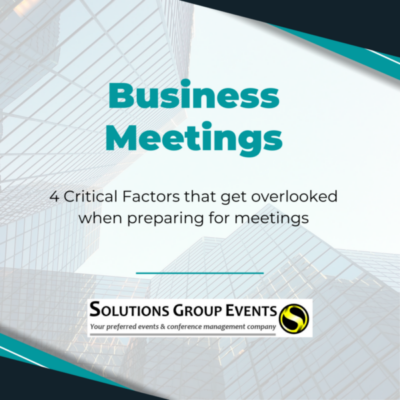
OWN THE VIRTUAL ROOM IN YOUR NEXT PRESENTATION
Recently, I was one-third of the way through delivering a virtual, high-stakes client presentation when my screen went blank – that’s right – blank… When I went to grab the document I had been sharing, it was gone.
Stressed, I took a deep breath and asked my client, Sibonile, to bring up the duplicate deck sent to her in advance and to please share her screen. She did, and we carried on. My shattered nerves! I was so relieved that we had a Plan B.
The lesson: The question is not whether something will go wrong during a virtual presentation. It is what and when.
Managing the virtual environment is a steep learning curve. Technology is constantly evolving, and it is hard to keep up with video platforms, cameras, lights, microphones, backgrounds, and bandwidth. The following tips will help you prepare to own the virtual room.
Tip No. 1: Practice is the price of proficiency
Practice is vital for all presentations, but with virtual presentations, proficiency has additional dimensions. You will want to practice with all the tools you will be using when you deliver your presentation – everything — visuals, lighting, microphone, platform, clicker, collaborative features (e.g., polls, chat, hand-raising). In addition to mastering your content, being proficient with the tech is mission critical.
Be sure to practice even if you have used the platform or tech tools numerous times. If presenting on the client’s platform, request a dry run. Even if you are familiar with the platform, their interface may have varying capabilities or operate differently than what you are used to.
Tip No. 2: Sign on early
On the day of your presentation, sign on at least 30 minutes before showtime and confirm that everything is working as planned. You never know what updates occurred overnight and how they might affect the platform and technology you are using.
Tip No. 3: Check your background
We’ve all given up a bit of privacy working from home with our cameras on. Sign on early to check your camera angle ensuring your background aligns with your professional brand rather than distracts from it.
Tip No. 4: Confirm the audience experience
What you see and what listeners experience can vary. That is why it is smart to sign in incognito using a second device and see what the audience sees. You will want to ensure that everything is visible on a monitor, laptop, tablet, or phone. For example, what does it look like when the poll launches? How do you appear on the screen? Is the audience seeing what you intend, or is your presenter mode visible?
Clearly, there is a lot to consider when it comes to managing the virtual environment. Just one of the many reasons it is a good idea to invite engagement by teaming up…
Tip No. 5: Team up
You do not have to do this by yourself. Team up with someone to help with technical issues listeners may experience, field questions, monitor the chat, launch polls, etc. This partnership frees you up to focus on your content and stay engaged with your listeners.
Tip No. 6: W.A.I.T.
With colleagues jumping in and out of Zoom meetings every 30 minutes, presentations need to be cogent and focused on what is important to your listeners. As you craft your remarks remember the acronym W.A.I.T, — “Why am I talking?” — to assist in creating pertinent and concise messaging.
Tip No. 7: Diverse devices
Chances are your audience will view your presentation on a variety of devices. Make sure your slides are easy to read on laptops, tablets, and phones. How much pinching or spreading is required to view your visuals on a phone or tablet?
Tip No. 8: Face time vs. slide time
If you normally present in-person with a slide deck, it is smart to rethink your slide support strategy for a virtual presentation. Consider what balance of face time and slide time is needed.
The ratio of face time to slide time depends on the purpose of your message. When credibility is critical, your face should be full screen, not a slide. If you are making a request, an impassioned plea or sharing sensitive information, you will want to have direct eye contact. Eye contact provides a connection with your audience and communicates integrity in your messaging.
Hint: Map out when you want to be talking directly to your audience and when to display visual support.
Tip No. 9: Engage your audience twice in the first five minutes
When you encourage your audience to participate from the start of your presentation, it sets an expectation and keeps listeners alert and connected. This tip comes from presentation expert, Nancy Duarte, who advises to engage your audience twice in the first five minutes of your presentation.
How? Here are a few thought starters to get your creative juices flowing:
- Use the participant box: Ask participants to add their temperament, location, or a favourite food after their names.
- Use the chat: Provide a prompt that participants can answer as they sign in and invite participants to continue the conversation throughout the presentation.
- Use breakout rooms: Ask participants to share their response to a question or prompt.
Energy is about how we look and sound — the liveliness we project when presenting. It is easy to draw energy from a live audience, but when you are talking to a screen, you do not have the real-time feedback that in-person presentations provide. Chances are you will not see smiles, nodding heads, or other body language to indicate how your audience is responding to what you are saying.
Despite the lack of real-time feedback, the key here is to be authentic. Use all your resources — voice, facial expressions, posture, and gestures — to engage listeners. Help your audience “get it,” not just “get through it.”
Tip No. 10: Take a stand
Standing adds instant energy to your presentation. If you choose this position, stand with your shoulders back and maintain an open posture with feet flat on the floor to avoid swaying. It is important to stay balanced and grounded from the waist down. To maintain this posture, it can help to imagine balancing a book on top of your head.
Tip No. 11: Sit tall
If you would rather not stand, that is fine. You can maintain a strong presence while sitting. Have you ever noticed the perfect posture of an anchor news journalist? Although they are seated, they have a strong, vertical posture.
To maintain a strong presence while seated, select a chair without wheels and avoid leaning, spinning, or swaying. Keep your feet flat on the floor with your back barely or not touching the back of the chair. This will help ensure that neither your body nor your mind will be tempted to rest.
Tip No. 12: Elevate your camera to eye level
Keeping eye contact for virtual presentations is not easy. Camera height makes a big difference. If your camera is too low, you will appear to be looking down your nose at the audience. If it is too high, your head will be tilted back, which makes you look a bit arrogant. Elevating your camera to eye level will allow you to look directly into the camera while speaking.
Tip No. 13: Keep two eyes on the camera
The best practice is to always keep your eyes on the camera. However, non-stop eye contact can be intense. To take a slight break, “The On-Camera Coach” Karin Reed suggests looking to the bottom of your device for a half-second before returning to the lens.
Tip No. 14: Smile
Smile — not like a clown! — but with a calm, easy expression that matches what you are saying. Keeping a pleasant facial expression relaxes listeners and invites them into the conversation.
Tip No. 15: Paint your words
Use your voice to word-paint your message. Do this by changing your volume, adding vocal inflection, altering the pitch of your voice, or pausing before and after key words or phrases. This technique alone will help ensure your audience stays connected and engaged throughout your presentation.
As a seasoned presenter, you already know how to own a physical room. Owning a virtual room requires the same skills with just a sprinkle of added nuance. Master these 15 tips.
Then, be confident. You got this!
Content per smartbrief





froleprotrem
23 April, 2021 at 11:08I like this post, enjoyed this one thankyou for posting.
Shirley Gainsford
23 April, 2021 at 11:45Hi there, thank you so much, we appreciate it.
Columbus Labovitch
30 April, 2021 at 04:08This is really fascinating, You’re an excessively skilled blogger. I have joined your feed and look ahead to in the hunt for extra of your magnificent post. Additionally, I have shared your website in my social networks!
Shirley Gainsford
30 April, 2021 at 09:01Thank you so much for the feedback.
storno brzinol
17 May, 2021 at 21:46This is really interesting, You’re a very skilled blogger. I have joined your feed and look forward to seeking more of your excellent post. Also, I’ve shared your site in my social networks!
Shirley Gainsford
18 May, 2021 at 15:34Hi there, thank you for the feedback. Have a look out for more to come.